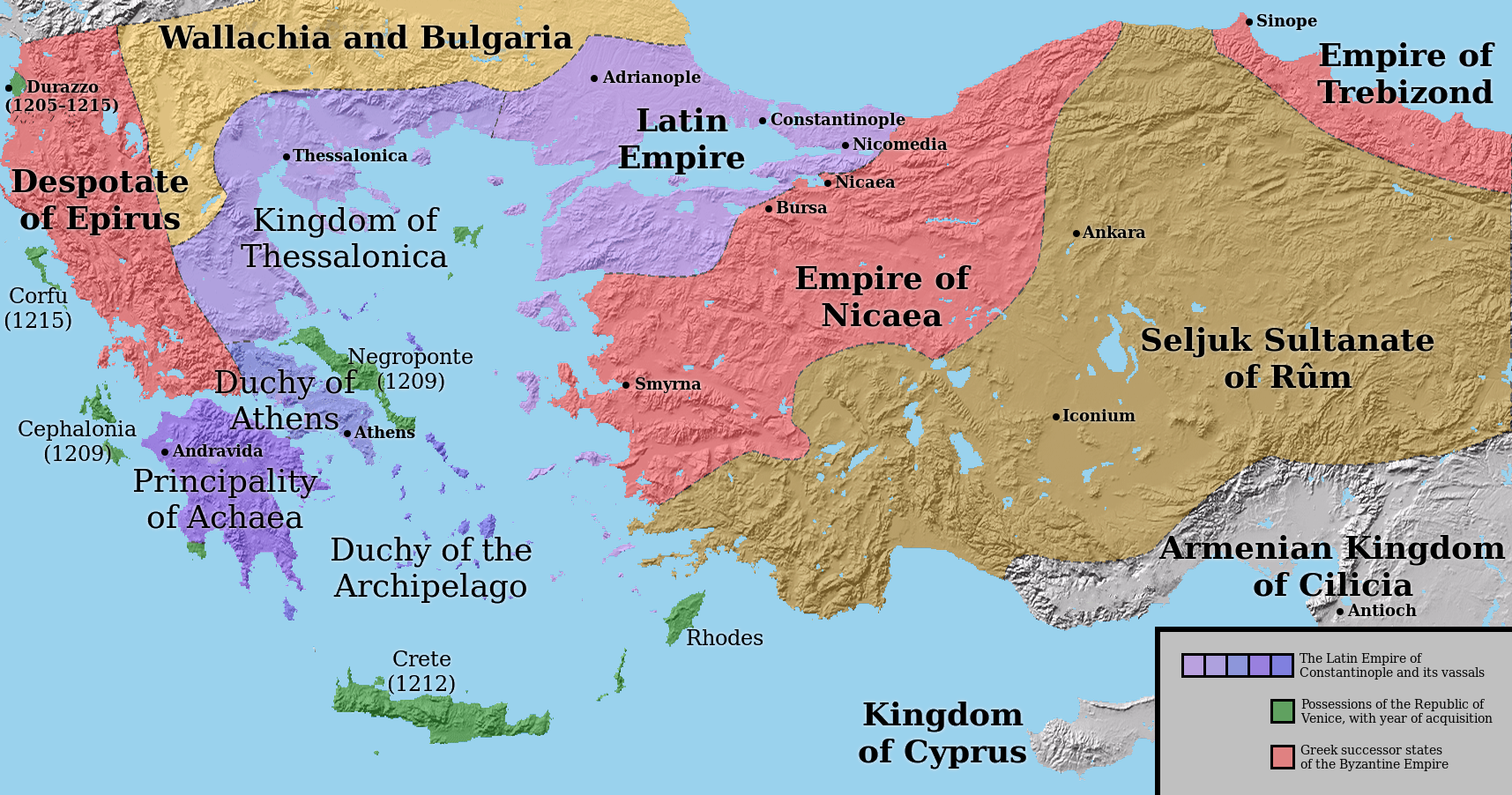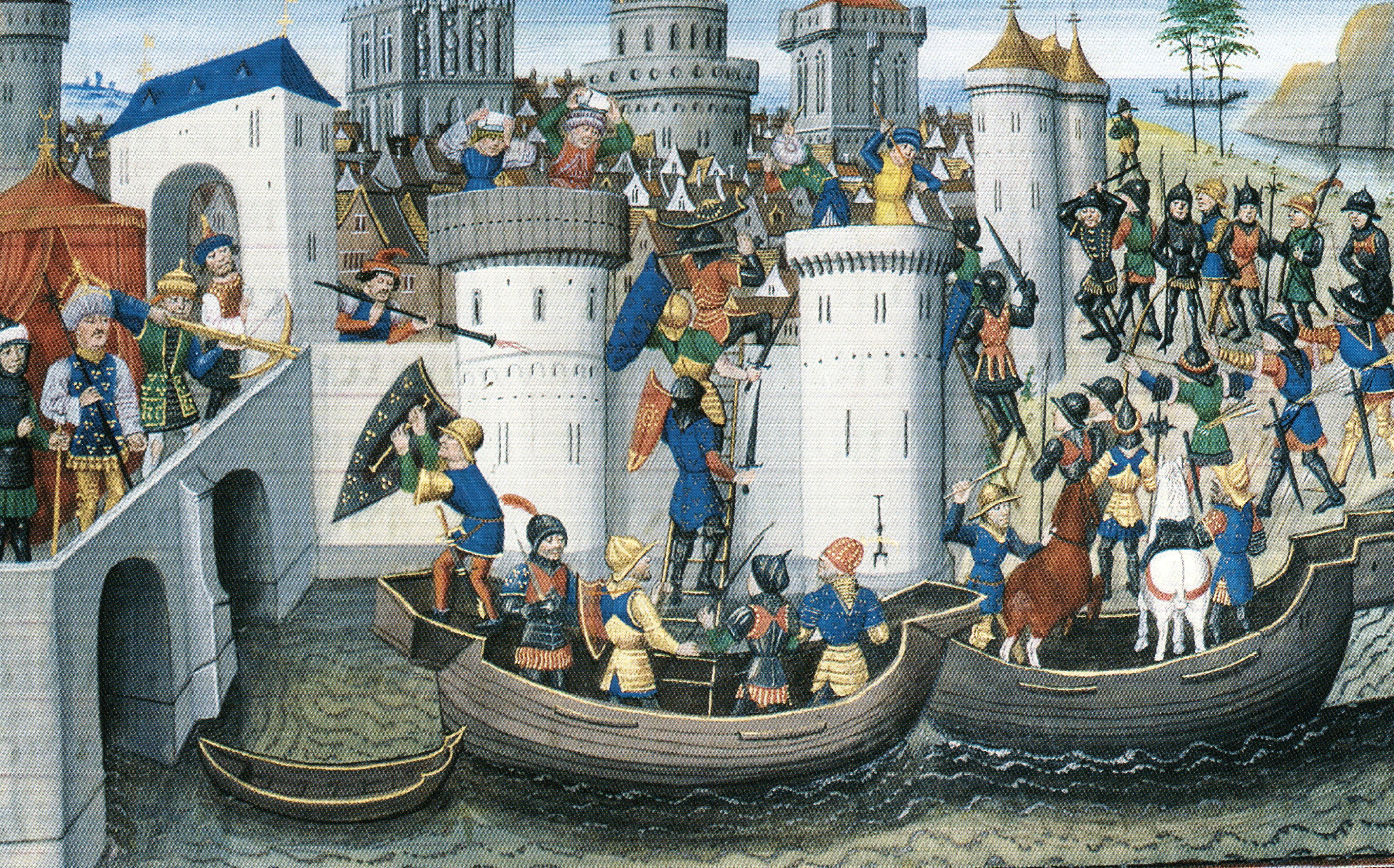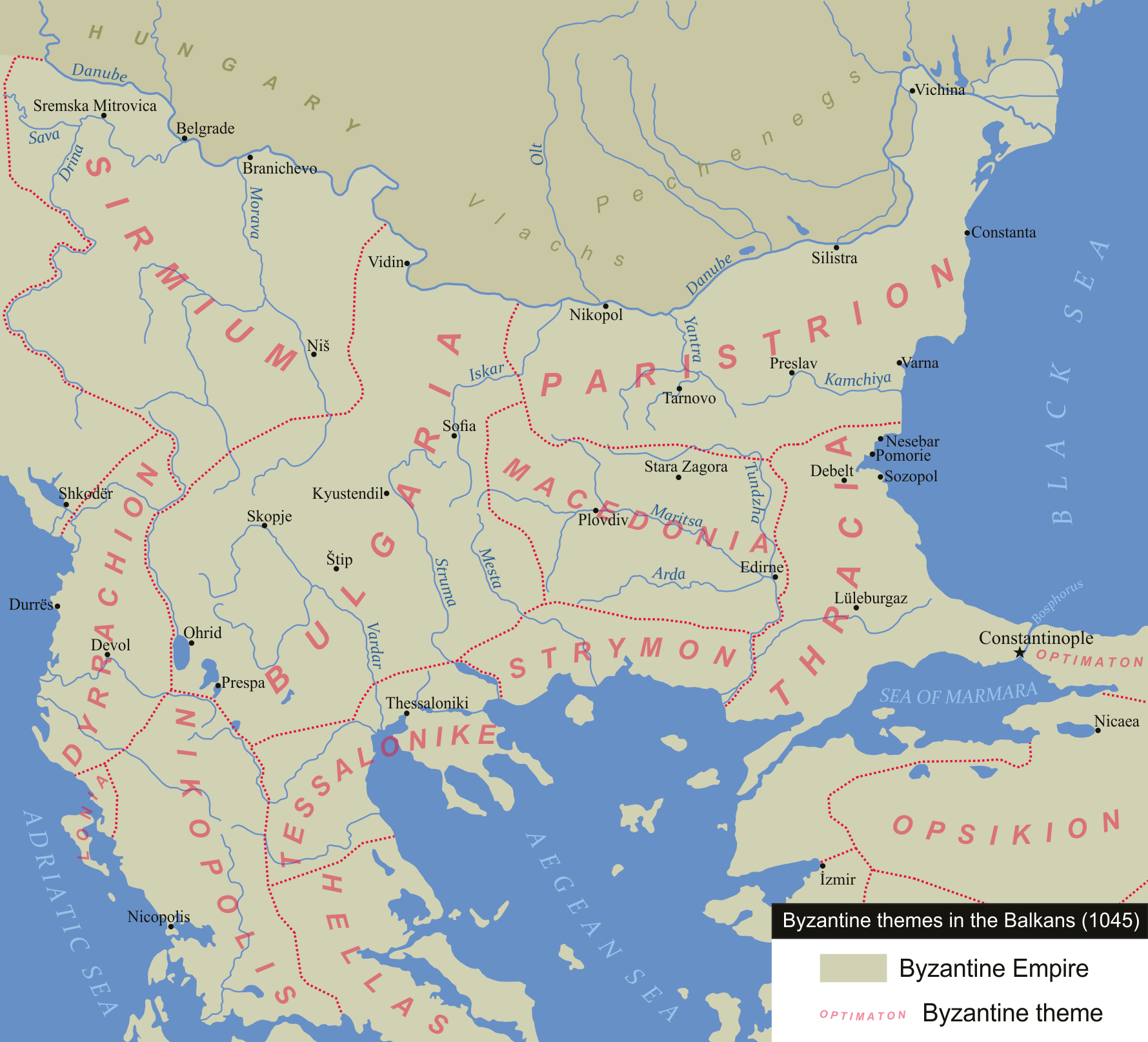|
Isaac Komnenos Vatatzes
Isaac Komnenos Vatatzes (; died 1196) was a Byzantine aristocrat and military commander, who was the son-in-law of Emperor Alexios III Angelos and received the rank of ''sebastokrator''. Life Isaac Komnenos Vatatzes was the youngest son of Alexios Vatatzes, a son of the general Theodore Vatatzes and the purple-born princess Eudokia Komnene, daughter of Emperor John II Komnenos (), and of Maria Pegonitissa. The couple married around 1158, at the initiative of Emperor Manuel I Komnenos. In 1190, Isaac participated in a campaign against the Vlach– Bulgarian uprising of Asen and Peter in the area of the Balkan Mountains. Along with Manuel Kamytzes, he commanded the Imperial army's vanguard, while Emperor Isaac II Angelos () and his brother Alexios (the future Alexios III Angelos, ) commanded the main body and the ''sebastokrator'' John Doukas was in command of the rear guard. During their retreat through a narrow pass, the Bulgarians allowed the vanguard to pass, but then fell on ... [...More Info...] [...Related Items...] OR: [Wikipedia] [Google] [Baidu] |
Byzantine
The Byzantine Empire, also known as the Eastern Roman Empire, was the continuation of the Roman Empire centred on Constantinople during late antiquity and the Middle Ages. Having survived the events that caused the fall of the Western Roman Empire in the 5th centuryAD, it endured until the fall of Constantinople to the Ottoman Empire in 1453. The term 'Byzantine Empire' was coined only after its demise; its citizens used the term 'Roman Empire' and called themselves 'Romans'. During the early centuries of the Roman Empire, the western provinces were Latinised, but the eastern parts kept their Hellenistic culture. Constantine I () legalised Christianity and moved the capital to Constantinople. Theodosius I () made Christianity the state religion and Greek gradually replaced Latin for official use. The empire adopted a defensive strategy and, throughout its remaining history, experienced recurring cycles of decline and recovery. It reached its greatest extent un ... [...More Info...] [...Related Items...] OR: [Wikipedia] [Google] [Baidu] |
Alexios Aspietes
Alexios Aspietes (, ) was a Byzantine governor and military leader who was captured by the Bulgarians, and led an anti-Bulgarian rebellion at Philippopolis in 1205, being acclaimed emperor by the citizens. Life A member of the Aspietes family, of noble Armenian origin, Alexios Aspietes was probably a relative of the generals Michael Aspietes and Constantine Aspietes, who were active in the late 12th century. Alexios Aspietes first appears in 1195, when he was governor of the town of Serres, and was ordered by Emperor Alexios III Angelos to march against the Bulgarian– Vlach rebellion of the brothers Peter and Ivan Asen. In the event, in the summer or autumn of the same year, Aspietes and his army were defeated by the rebels, who took many prisoners, including Aspietes himself. Aspietes disappears from the record for the next decade, but was apparently released from captivity, since in 1205 he is mentioned as being in Philippopolis (modern Plovdiv in Bulgaria). In the af ... [...More Info...] [...Related Items...] OR: [Wikipedia] [Google] [Baidu] |
Empire Of Nicaea
The Empire of Nicaea (), also known as the Nicene Empire, was the largest of the three Byzantine Greeks, Byzantine Greek''A Short history of Greece from early times to 1964'' by Walter Abel Heurtley, W. A. Heurtley, H. C. Darby, C. W. Crawley, C. M. Woodhouse (1967), p. 55: "There in the prosperous city of Nicaea, Theodoros Laskaris, the son in law of a former Byzantine Emperor, establish a court that soon become the Small but reviving Greek empire." rump states founded by the aristocracy of the Byzantine Empire that fled when Constantinople was occupied by Western European and Republic of Venice, Venetian armed forces during the Fourth Crusade, a military event known as the Sack of Constantinople. Like the other Byzantine rump states that formed due to the 1204 fracturing of the empire, such as the Empire of Trebizond and the Despotate of Epirus, it was a continuation of the eastern half of the Roman Empire that survived well into the Middle Ages. A fourth state, known in histori ... [...More Info...] [...Related Items...] OR: [Wikipedia] [Google] [Baidu] |
Theodore I Laskaris
Theodore I Laskaris or Lascaris (; 1175November 1221) was the first emperor of Nicaea—a successor state of the Byzantine Empire—from 1205 to his death. Although he was born to an obscure aristocratic family, his mother was related to the imperial Komnenos clan. He married Anna, a younger daughter of Emperor Alexios III Angelos in 1200. He received the title of despot before 1203, demonstrating his right to succeed his father-in-law on the throne. The Fourth Crusade forced AlexiosIII to flee from Constantinople in 1203. Theodore was imprisoned by the crusaders (commonly referred to as "Latins" by the Byzantines), but he escaped. After crossing the Bosporus into Asia Minor (in present-day Turkey), he started to organise the local Greeks' resistance against the Latins in Bithynia in his father-in-law's name. He concluded an alliance with the Seljuq sultan of Rum, but he could not stop the Latins' expansion. Neither could he prevent a claimant to the imperial t ... [...More Info...] [...Related Items...] OR: [Wikipedia] [Google] [Baidu] |
Leopold VI, Duke Of Austria
Leopold VI (15 October 1176 – 28 July 1230), known as Leopold the Glorious, was Duke of Styria from 1194 and Duke of Austria from 1198 to his death in 1230. He was a member of the House of Babenberg. Biography Leopold VI was the younger son of Leopold V, Duke of Austria, Duke Leopold V and his wife, Helena of Hungary, Duchess of Austria, Helena of Hungary (daughter of Géza II of Hungary and Euphrosyne of Kiev). He was betrothed to the Damsel of Cyprus in 1193, but the marriage never took place. In contravention of the provisions of the Georgenberg Pact, the Babenberg reign was divided after the death of Leopold V: Leopold VI's elder brother, Frederick I, was given the Duchy of Austria (corresponding roughly to modern Lower Austria and eastern Upper Austria), while Leopold VI himself became Duke of Styria. The duchies were reunified under Leopold VI when Frederick died after only four years of rule. Leopold VI participated in the Reconquista in Spain and in two crusades, the ... [...More Info...] [...Related Items...] OR: [Wikipedia] [Google] [Baidu] |
Constantinople
Constantinople (#Names of Constantinople, see other names) was a historical city located on the Bosporus that served as the capital of the Roman Empire, Roman, Byzantine Empire, Byzantine, Latin Empire, Latin, and Ottoman Empire, Ottoman empires between its consecration in 330 until 1930, when it was renamed to Istanbul. Initially as New Rome, Constantinople was founded in 324 during the reign of Constantine the Great on the site of the existing settlement of Byzantium, and shortly thereafter in 330 became the capital of the Roman Empire. Following the collapse of the Western Roman Empire in the late 5th century, Constantinople remained the capital of the Eastern Roman Empire (also known as the Byzantine Empire; 330–1204 and 1261–1453), the Latin Empire (1204–1261), and the Ottoman Empire (1453–1922). Following the Turkish War of Independence, the Turkish capital then moved to Ankara. Although the city had been known as Istanbul since 1453, it was officially renamed as Is ... [...More Info...] [...Related Items...] OR: [Wikipedia] [Google] [Baidu] |
Theodora Angelina, Duchess Of Austria
Theodora may refer to: * Theodora (given name), a given name of Greek origin, meaning "God's gift" Historical figures known as Theodora Byzantine empresses * Theodora (wife of Justinian I) ( 500 – 548), saint by the Orthodox Church * Theodora of Khazaria, 7th-century empress, wife of Justinian II * Theodora (wife of Theophilos), 9th-century empress, saint by the Orthodox Church * Theodora (wife of Romanos I), 10th-century empress * Theodora (daughter of Constantine VII), 10th-century empress, wife of John I Tzimiskes * Theodora Porphyrogenita (c. 980–1056), empress regnant in 1042 and 1055–1056 * Theodora Palaiologina (Byzantine empress) (c. 1240–1303), wife of Michael VIII Palaiologos Trebizonian empresses *Theodora Axuchina, empress consort of Alexios I of Trebizond *Theodora of Trebizond (before 1253 – after 1285), empress regnant from 1284 to 1285 *Theodora Kantakouzene (c. 1240 – after 1290), empress consort of Alexios III of Trebizond *Theodora Kantakouzene ... [...More Info...] [...Related Items...] OR: [Wikipedia] [Google] [Baidu] |
Ivanko (boyar)
Ivanko (, ), also referred to by some scholars as Ivanko-Alexius, was a Vlach boyar who killed his cousin Ivan Asen I, the ruler of the renascent Second Bulgarian Empire, in 1196. He was a leader of local Vlachs and Bulgarian Slavs. Life It is not known when and where Ivanko was born. Ivanko served in Bulgarian ruler and his cousin Ivan Asen's court. In 1196, Ivanko murdered Asen. The murder occurred when Asen angrily summoned Ivanko to discipline him for having an affair with his wife's sister. Bulgarian historian Vasil Zlatarski attributed this murder by Ivanko to the Cuman faction in Bulgarian court, as opposed to other explanations involving anti-Vlach Bulgarian boyars, boyar discontent with his harsh rule, Byzantine intrigue, etc. After the murder, he seized the Bulgarian capital Tarnovo and requested the assistance of the Byzantines. However, the Byzantine army mutinied on its way and thus let Asen's brother Peter claim the throne, forcing Ivanko to flee to Byzantine capit ... [...More Info...] [...Related Items...] OR: [Wikipedia] [Google] [Baidu] |
Boyar
A boyar or bolyar was a member of the highest rank of the feudal nobility in many Eastern European states, including Bulgaria, Kievan Rus' (and later Russia), Moldavia and Wallachia (and later Romania), Lithuania and among Baltic Germans. Comparable to Dukes/Grand Dukes, Boyars were second only to the ruling princes, grand princes or tsars from the 10th to the 17th centuries. Etymology Also known as ''bolyar''; variants in other languages include or ; , , ; , ; and . The title Boila is predecessor or old form of the title Bolyar (the Bulgarian word for Boyar). Boila was a title worn by some of the Bulgar aristocrats (mostly of regional governors and noble warriors) in the First Bulgarian Empire (681–1018). The plural form of boila ("noble"), ''bolyare'' is attested in Bulgar inscriptions and rendered as ''boilades'' or ''boliades'' in the Greek of Byzantine documents. Multiple different derivation theories of the word have been suggested by scholars and linguists ... [...More Info...] [...Related Items...] OR: [Wikipedia] [Google] [Baidu] |
Veliko Tarnovo
Veliko Tarnovo (, ; "Great Tarnovo") is a city in north central Bulgaria and the administrative centre of Veliko Tarnovo Province. It is the historical and spiritual capital of Bulgaria. Often referred to as the "''City of the Tsars''", Veliko Tarnovo is located on the Yantra (river), Yantra River and is famously known as the historical capital of the Second Bulgarian Empire, attracting many tourists with its unique architecture. The old part of the town is situated on three hills, Tsarevets (fortress), Tsarevets, Trapezitsa (fortress), Trapezitsa, and Sveta Gora, rising amidst the meanders of the Yantra. On Tsarevets are the palaces of the Bulgarian emperors and the Patriarchate, the Ascension Cathedral (Veliko Tarnovo), Patriarchal Cathedral, and also a number of administrative and residential edifices surrounded by thick walls. Trapezitsa is known for its many churches and as the former main residence of the nobility. During the Middle Ages, the town was among the main Euro ... [...More Info...] [...Related Items...] OR: [Wikipedia] [Google] [Baidu] |
Ivan Asen I Of Bulgaria
Ivan Asen I, also known as Asen I or John Asen I (; died in 1196), was emperor or tsar of Second Bulgarian Empire, Bulgaria from 1187/1188 to 1196 as co-ruler with his elder brother, Peter II of Bulgaria, Peter II. Hailing from the Theme (Byzantine district), Byzantine theme of Paristrion, his exact place and date of birth are unknown. Most contemporaneous chronicles describe Asen and his brothers, Theodor (Peter) and Kaloyan of Bulgaria, Kaloyan, as Vlachs but they were probably of mixed Bulgarians, Bulgarian, Cumans, Cuman and Vlach ancestry. In 1185, Asen and Theodor went to see the Byzantine Emperor Isaac II Angelos in Thrace (theme), Thrace to demand an estate in the Balkan Mountains. After the Emperor refused and humiliated them, the brothers persuaded their Bulgarian and Vlach compatriots to rise up against the Byzantine Empire. Before the end of the year, Theodor was crowned Emperor of Bulgaria, taking the name Peter. After Isaac II defeated them in early 1186, Asen and ... [...More Info...] [...Related Items...] OR: [Wikipedia] [Google] [Baidu] |






